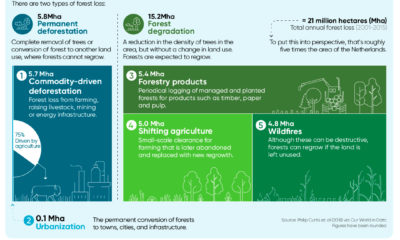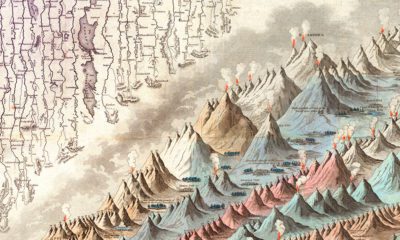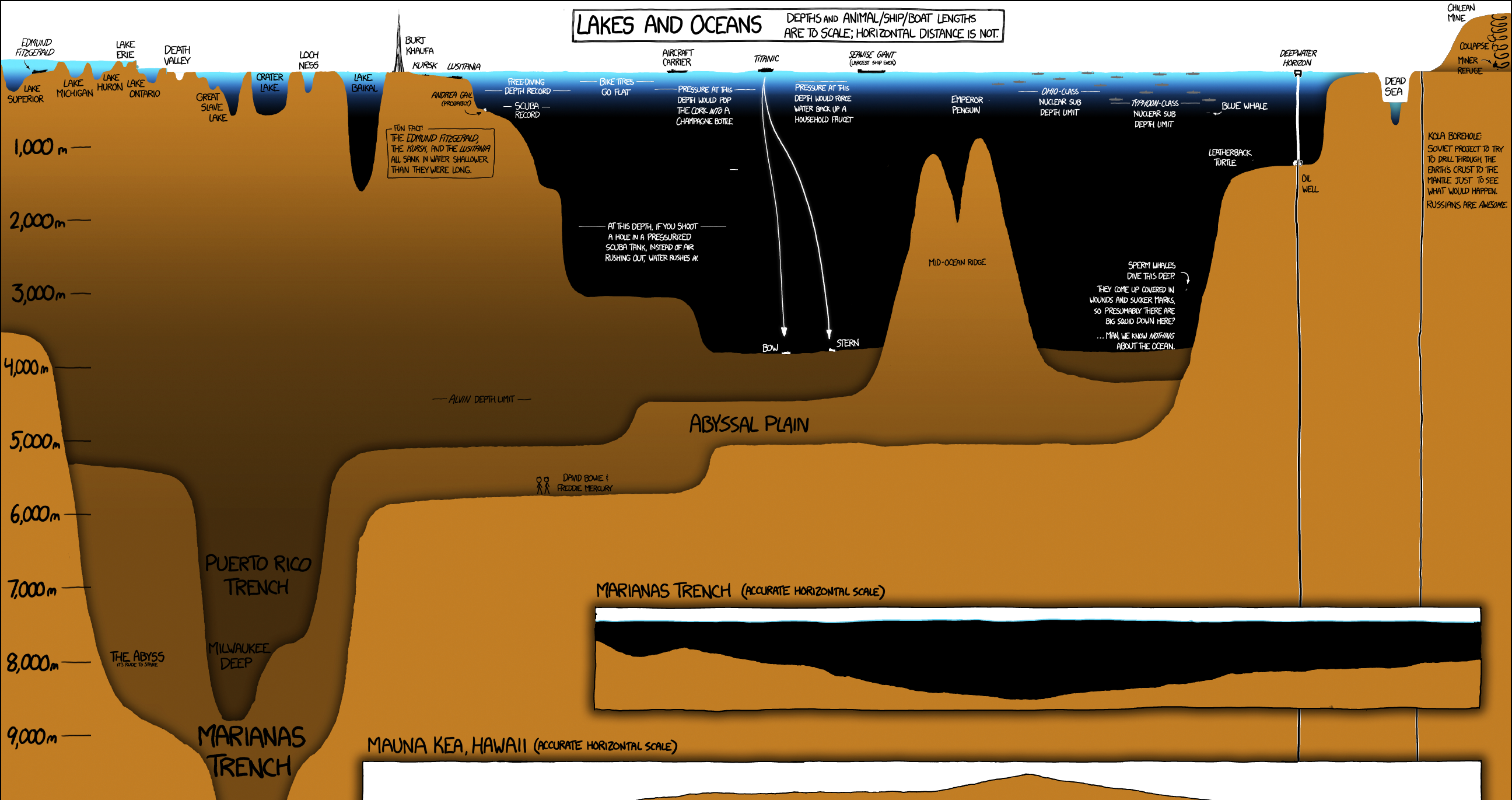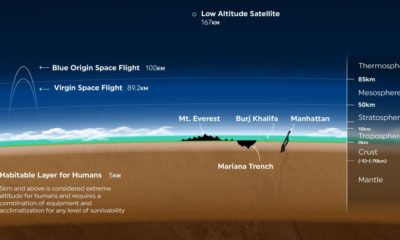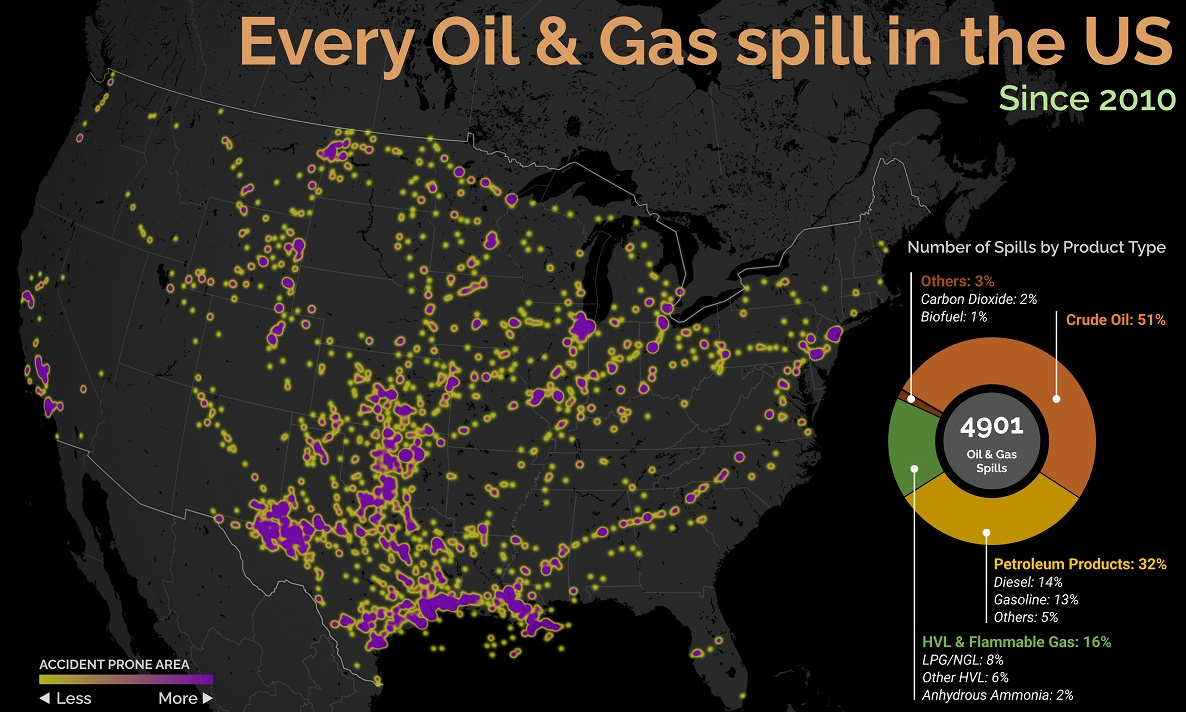From the Himalayas to the Andes, mountains have inspired and awed us for thousands of years. Humans have ascribed all sorts of mythologies and metaphors to these jagged geological features. But while Everest or Kilimanjaro may ring a bell, do you know the meaning behind their names? Today’s infographic from Alan’s Factory Outlet sorts the world’s highest mountains by continent, and explains the detailed origins of their names.
A Mountain By Any Other Name
Out of the 70 mountains profiled, only 41 are actually considered mountains. The rest are technically either a massif or a volcano (or a dome in one instance). A massif (French for ‘massive’) is produced when a hard, unbendable rock is pushed towards the surface. They can also be formed when magma hardens once it’s above ground. For the rest of this post, we’ll refer to mountains and massifs interchangeably. The highest mountains on each continent are considered to be part of the Seven Summits. Mountaineer Richard Bass was the first to scale all seven summits in 1985—and the 55-year old did so in only one year. The Highest Mountain on Each Continent Among these impressive peaks, two are technically volcanoes—Mount Kilimanjaro in Tanzania, and Mount Elbrus in Russia. Overall, it’s clear that a majority of their names have been influenced by the native languages in their surroundings.
The 10 Asian Giants
The highest mountains in the world are all in Asia, with nine of the ten highest found in the Himalayan range. Many of their names are derived from Sino-Tibetan languages, and some have mythological or religious influences. The second-highest mountain, K2 in Pakistan, lacks a more flowery name because it isn’t visible by any locals due to its remote location.
Majestic North America
The highest peaks in this region are scattered across three countries, with five volcanoes, four mountains, and one massif. Denali in Alaska, U.S. boasts unique names across nearly seven different Indigenous languages. Mexico’s highest volcanoes also have a Romeo and Juliet-esque myth that links them. Popocatépetl (active volcano) and Iztaccíhuatl (dormant volcano) are presumed to be lovers, both of whom meet a tragic end. It’s said that the active volcano is avenging its beloved’s death to this day.
Far Beyond the Horizon
Traveling to the southernmost tip of the Earth, you might be surprised to learn that volcanoes even exist in Antarctica. Mount Sidley is the highest, dormant, snow-covered volcano found here. The only dome on the entire highest mountains list is Dome Argus (13,428 ft or 4,093 m). This is the coldest place on the planet, dropping between -144°F to -133°F (-98°C to -90°C). Dome Argus is also unique from another angle—it’s the only one on Antarctica with fabled origins, based off the Greek figure Argus, builder of the mythological hero Jason and the Argonauts’ ship. The remaining mountains here are named for scientists and supporters of various Antarctic expeditions.
Under Sea, and Outer Space
All these highest mountains are visible on land, but it’s possible that more secrets remain in the deep blue. The Hawaiian dormant volcano Mauna Kea doesn’t make this list due to its lower elevation above sea level, but it’s actually 33,500ft (10,200m) high from tip to peak—far taller than even Everest. Everest is still really impressive, but it’s also only a fraction of the size of Olympus Mons, the highest mountain on Mars and in the solar system. New planets are also being discovered every year, presenting further possibilities. Ultimately, this suggests we’ve not yet peaked at discovering the massive mountains which exist in—and out—of this world. on Aside from the obvious climate impact they bring, one other downside in particular is spills, which can lead to ecological and economic damage. These can happen due to pipeline leaks, train derailments, or other industrial disasters. This graphic from Preyash Shah provides a visual overview of every oil and gas spill in the contiguous U.S. since 2010. Data is tracked by the U.S. government’s Pipeline and Hazardous Materials Safety Administration (PHMSA).
U.S. Oil and Gas Spills (2010‒2022)
The majority of spills that have occurred come mostly from crude oil, followed by petroleum products and gas. Note that this data covers the quantity of spills and not damages or volume.
Crude oil, which makes up just over half of documented spills, is also one of the most costly. Contaminations can persist for years after a spill, and its impact on local mammals and waterfowl is particularly harsh. This has been the case with the Deepwater Horizon spill (also known as the “BP oil spill”), which experts say is still causing harm in the Gulf of Mexico. Other products with lots of spills include petroleum products such as diesel or gasoline, as well as liquefied natural gas or other volatile liquids. Interestingly, liquefied carbon dioxide can also be transported in pipelines, commonly used for carbon capture storage, but requires high pressure to maintain its state. When looking at the location of spills, it’s clear that the South Central states have experienced the highest number of disasters. In contrast, the West Coast has had substantially less activity. However, this makes much more sense when looking at the dominant oil producing states, where Texas and surrounding neighbors reign supreme. Of the 4,901 spills during this period, Texas accounts for 1,936 or roughly 40% of all oil and gas spills. This is followed by Oklahoma, which has had 407 spills and is one of the largest net exporters of oil and gas in the country.
What Causes Spills?
Oil and gas spills actually have a surprisingly long history, with one of the earliest dating back to 1889, when a spill was reported on the coast between Los Angeles and San Diego. Causes have consisted primarily of weather, natural disasters, equipment and technological malfunction, as well as human error. However, they only became a widespread problem around the halfway mark of the 20th century, when petroleum extraction and production really began to take off. This era also saw the emergence of supertankers, which can transport half a million tons of oil but therefore make the risk of spills even costlier. In fact, the biggest spill off U.S. waters after the Deepwater Horizon disaster is the 1989 Exxon Valdez spill in Alaska, when a tanker crashed into a reef and 11 million gallons of oil spilled into the Pacific Ocean.
